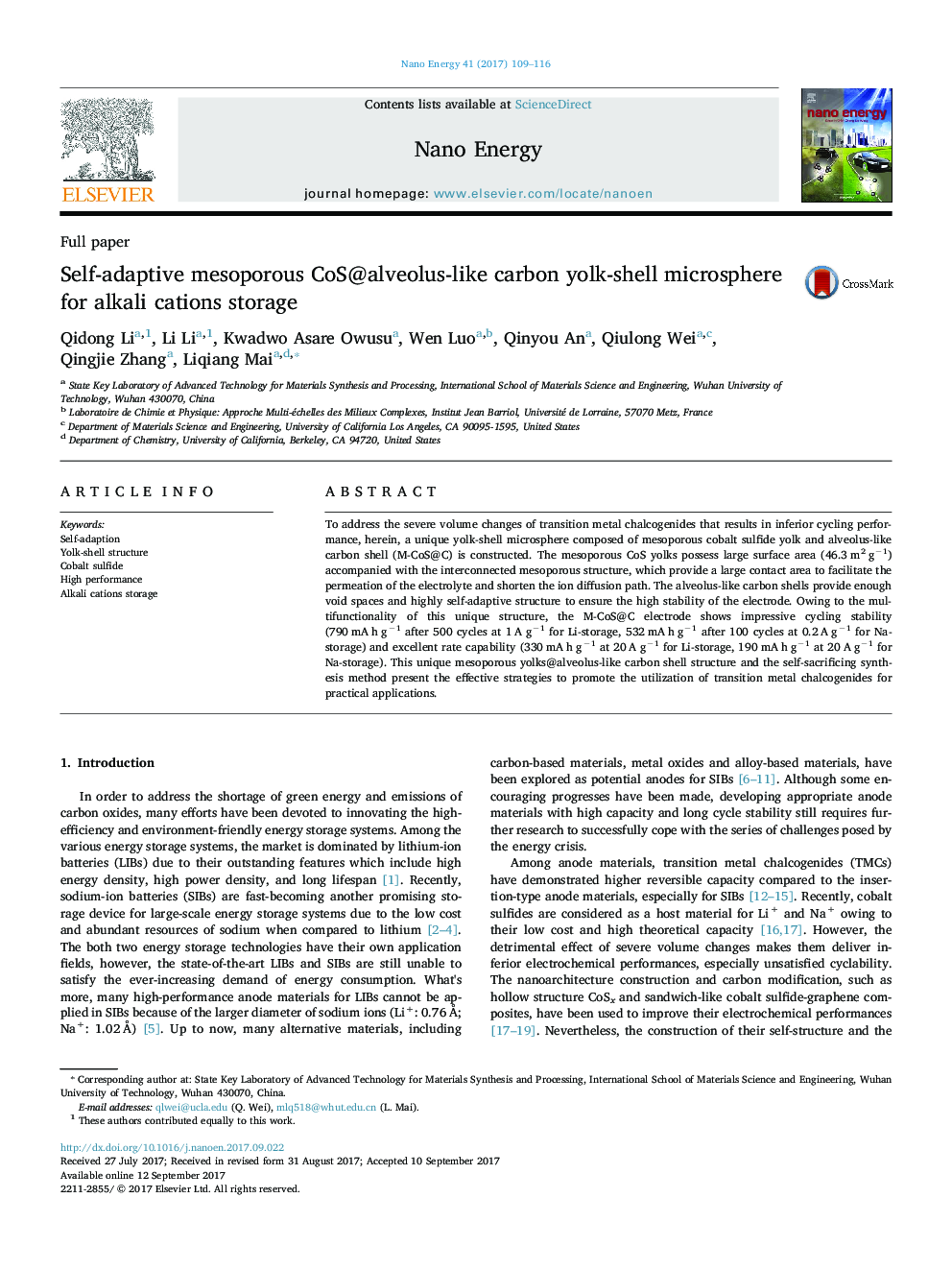| Article ID | Journal | Published Year | Pages | File Type |
|---|---|---|---|---|
| 5451760 | Nano Energy | 2017 | 8 Pages |
â¢Developing a self-sacrificing generated void space method to synthesize a unique yolk-shell mesoporous-CoS@C microsphere.â¢Mesoporous-CoS@C contains mesoporous CoS yolk and alveolus-like carbon shell.â¢Mesoporous-CoS@C electrode shows impressive cycling stability and excellent rate capability for both Li+ and Na+ storage.
To address the severe volume changes of transition metal chalcogenides that results in inferior cycling performance, herein, a unique yolk-shell microsphere composed of mesoporous cobalt sulfide yolk and alveolus-like carbon shell (M-CoS@C) is constructed. The mesoporous CoS yolks possess large surface area (46.3 m2 gâ1) accompanied with the interconnected mesoporous structure, which provide a large contact area to facilitate the permeation of the electrolyte and shorten the ion diffusion path. The alveolus-like carbon shells provide enough void spaces and highly self-adaptive structure to ensure the high stability of the electrode. Owing to the multifunctionality of this unique structure, the M-CoS@C electrode shows impressive cycling stability (790 mA h gâ1 after 500 cycles at 1 A gâ1 for Li-storage, 532 mA h gâ1 after 100 cycles at 0.2 A gâ1 for Na-storage) and excellent rate capability (330 mA h gâ1 at 20 A gâ1 for Li-storage, 190 mA h gâ1 at 20 A gâ1 for Na-storage). This unique mesoporous yolks@alveolus-like carbon shell structure and the self-sacrificing synthesis method present the effective strategies to promote the utilization of transition metal chalcogenides for practical applications.
Graphical abstractDownload high-res image (185KB)Download full-size image
